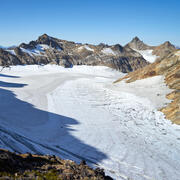Water Quality and Quantity
Clean water is critical for healthy ecosystems and societies. Its availability is affected by interactions among climate, geology, biota, and human modification of the land. The Ecosystems Land Change Science Program documents long-term patterns and drivers of water supply and to improve projections of future change and its impacts on ecosystems, communities, agriculture, and infrastructure.













